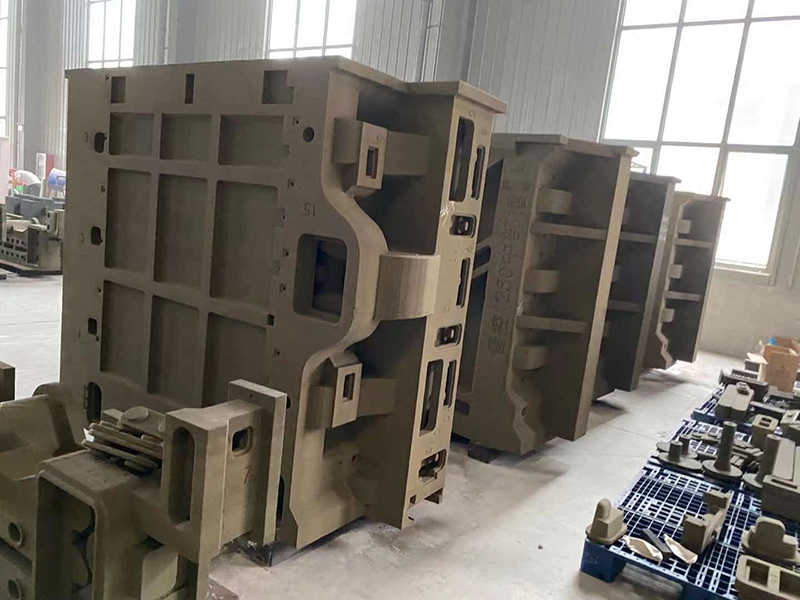Understanding Sand Casting Technology A Comprehensive Overview
Sand casting technology is one of the oldest and most versatile manufacturing processes utilized in various industries. Its origins can be traced back thousands of years, making it a foundational method in metal casting. Today, it continues to play a significant role in producing complex shapes and components efficiently and cost-effectively.
What is Sand Casting?
At its core, sand casting involves creating a mold from a mixture of sand, water, and binding agents. This mold is then used to pour molten metal into it, allowing the metal to solidify and take the shape of the mold cavity. Once the metal cools and hardens, the sand mold is broken apart to reveal the finished casting.
The Sand Casting Process
The sand casting process can be broken down into several key steps
1. Pattern Making A pattern, which is a replica of the final product, is created from materials such as wood, metal, or plastic. The pattern must account for shrinkage during cooling and other factors that might affect the final dimensions.
2. Mold Creation The pattern is pressed into a sand mixture to create a mold. The sand is typically mixed with clay and water to provide strength and cohesion. Once the pattern is removed, the mold is left with a cavity that mirrors the shape of the pattern.
3. Core Making For hollow parts or intricate details, cores made of sand are used. Cores are placed in the mold cavity before pouring the metal, allowing for the creation of internal features.
4. Melting the Metal The metal, usually a ferrous or non-ferrous alloy, is melted in a furnace. Attention is paid to the temperature to ensure the metal flows well and fills the mold completely.
5. Pouring The molten metal is poured into the mold through a sprue, a channel that guides the metal into the mold cavity. Fast and even pouring is crucial to avoid defects such as air pockets or cold shuts.
6. Cooling and Solidification The casting is allowed to cool and solidify. This stage can take anywhere from a few minutes to several hours, depending on the size and thickness of the casting.
sand casting technology

7. Mold Removal Once cooled, the sand mold is broken apart, and the casting is removed. Any excess sand is cleaned off, and the casting undergoes further finishing processes if required.
8. Finishing Processes Depending on the intended use, castings may undergo machining, surface treatment, or additional finishing work to meet design specifications.
Advantages of Sand Casting
Sand casting offers numerous benefits that make it an appealing choice for manufacturers
- Cost-Effective The materials used for sand molds are relatively inexpensive, and the setup costs are lower compared to other casting methods.
- Versatility Sand casting can accommodate a wide range of metal types, sizes, and geometries, making it suitable for various applications—from small parts to large industrial components.
- Complex Shapes The ability to create intricate designs and internal cavities makes sand casting ideal for complex components, particularly in the automotive and aerospace industries.
- Reusability The sand used in molds can often be reclaimed and reused, reducing waste and environmental impact.
Applications of Sand Casting
Sand casting is prevalent in numerous sectors. In the automotive industry, engine blocks, transmission cases, and other critical components are often produced using this method. The aerospace sector also benefits from sand casting when creating engine mounts and structural components. Additionally, industries such as construction, marine, and agricultural equipment frequently rely on sand casting for durable and reliable metal parts.
Conclusion
In conclusion, sand casting technology remains a cornerstone of modern manufacturing due to its versatility, cost-effectiveness, and capacity to produce complex shapes. As advancements continue to be made in materials and processes, sand casting is likely to remain a vital technique for industries aiming to innovate and meet the demands of an ever-evolving market. Understanding this technology not only allows for better design and production strategies but also highlights the enduring significance of traditional manufacturing methods in our contemporary industrial landscape.
Post time:ធ្នូ . 26, 2024 02:51
Next:Innovative Techniques in Steel Sand Casting for Enhanced Manufacturing Efficiency
